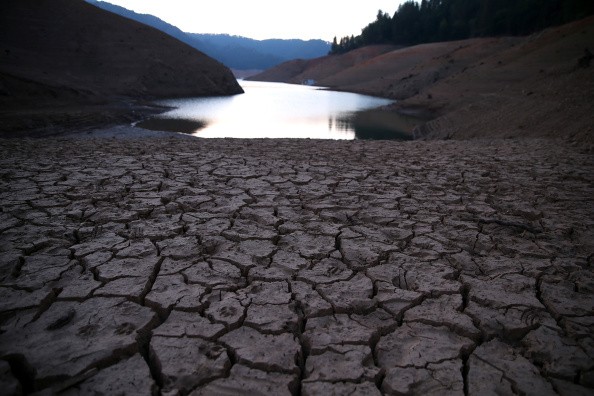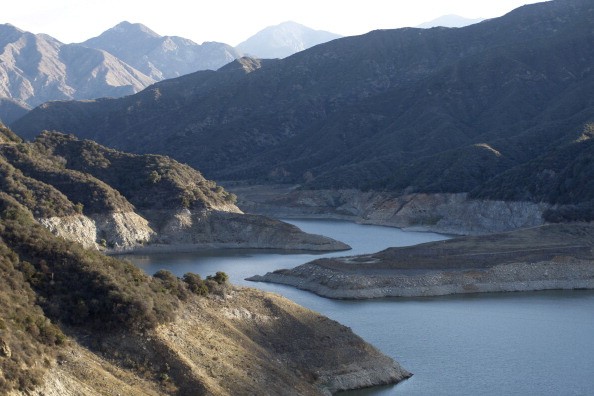Water shortage is expected to increase in more than 80% of croplands throughout this century.

According to new research published in the AGU journal Earth's Future, agricultural water shortage is anticipated to worsen across more than 80% of the world's croplands by 2050.
Looking at Future Water Demands
The new study looks at existing and future water demands for global agriculture. It anticipates whether available water sources, such as rainfall or irrigation, will be enough to satisfy those needs when climate change occurs. The researchers created a new index to evaluate and anticipate water shortage in agriculture's two key sources: rain-fed soil water (green water) and irrigation water (blue water) from rivers, lakes, and groundwater. It's the first research to use this comprehensive index globally to forecast global blue and green water shortages due to climate change.
"Agricultural production faces unprecedented problems as the major consumer of both blue and green water resources," said Xingcai Liu, an associate professor at the Chinese Academy of Sciences' Institute of Geographic Sciences and Natural Resources Research and the main author of the new study. "This index allows for a consistent assessment of agricultural water shortage in both rainfed and irrigated croplands."
Read also: Sand Crisis: Are We Running Out of Sand?
Increased Water Consumption

Water consumption has increased twice as quickly as the human population during the previous century. Water shortage is already a problem in agriculture on every continent, posing a severe danger to food security. Most water shortage models have neglected to include both blue and green water in their analyses.
The fraction of precipitation accessible to plants in the soil is known as green water. Green water makes up the bulk of precipitation, but it is often disregarded since it is invisible in the soil and cannot be retrieved for other purposes. The amount of green water available for crops is determined by the amount of rainfall received and water lost via runoff and evaporation. Farming techniques, plant cover, soil type, and terrain slope may all influence the outcome. The green water available to crops will likely fluctuate as temperatures and rainfall patterns shift due to climate change and agricultural techniques intensify to fulfill the requirements of a rising population.
Mesfin Mekonnen, an assistant professor of Civil, Construction, and Environmental Engineering at the University of Alabama who was not involved in the research said the findings are "extremely topical in emphasizing the influence of climate on crop water availability."
"What interests me about the article is developing a water scarcity indicator that considers both blue and green water," he added. "Most studies concentrate solely on blue water resources, with little regard for green water."
Global Water Scarcity
According to the study, worldwide agricultural water scarcity would deteriorate in up to 84 percent of croplands due to climate change. A loss of water resources causes a shortage in around 60% of those croplands.
Changes in available green water due to shifting precipitation patterns and increased evaporation due to rising temperatures are expected to affect around 16 percent of worldwide croplands. Including this crucial feature in our knowledge of water, the shortage may have ramifications for agricultural water management. More rain is expected in Northeast China and the Sahel region of Africa, for example, which might assist ease agricultural water constraints. Reduced precipitation in the Midwest and Northwest India, on the other hand, may lead to more irrigation to support intensive agriculture.
The new index might aid governments in assessing the danger and causes of agricultural water shortage and developing ways to mitigate future droughts.
Potential Strategies
Several strategies aid in agricultural water conservation. Mulching lowers soil evaporation, no-till farming increases water infiltration, and planting at different times can better match crop development with shifting rainfall patterns. Furthermore, contour farming, where farmers plow the soil in rows of the same height on sloped ground, avoids water flow and soil erosion.
"In the long run, boosting irrigation infrastructure and irrigation efficiency, for example, in Africa," Liu added, "would be efficient strategies to minimize the consequences of future climate change in increased food demand."
For similar news, don't forget to follow Nature World News!
© 2025 NatureWorldNews.com All rights reserved. Do not reproduce without permission.





